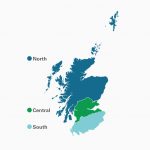Ofcom UK Infrastructure Study – 36% Can Get Ultrafast Broadband
The Connected Nations 2017 report has today been published by Ofcom, which reveals a huge rise in the availability of fixed line 300Mbps+ “ultrafast broadband” services to 36% of the UK (up from 2% last year). Elsewhere 4% (1.1 million premises) still cannot receive speeds of 10Mbps+ (down from 6%).
The surge in “ultrafast” coverage may come as a surprise but it’s not due to the roll-out of a magical new technology. Instead the figure largely stems from Virgin Media’s decision earlier this year to boost the top speed of their existing cable network from 200Mbps to 300Mbps (350Mbps on some tiers). Virgin are also in the process of expanding their network to cover around 60-65% of UK premises by the end of 2019, which means they should remain the driving force behind this figure for a while longer.
A Quick Note About Definitions
Ultrafast Broadband
The regulator has for awhile now almost arbitrarily chosen to define “ultrafast” speeds as starting at 300Mbps (Megabits per second), although it’s worth noting that the EU, UK Government, Openreach and many others have long preferred to define this as starting at 100Mbps+.
Superfast Broadband
The regulator defines this performance level as starting at 30Mbps, which is the same as the Scottish government and EU. The most recent Broadband Delivery UK contracts have also adopted the 30Mbps+ definition, although it’s worth noting that almost all of the earlier contracts adopted the Government’s earlier definition of 24Mbps+. In the grander scheme of things 24Mbps vs 30Mbps only has a tiny impact upon coverage figures.
Meanwhile the only other “ultrafast” capable technologies in our residential fixed line market are “full fibre” FTTP/H networks, which Ofcom reports as now being able to cover 3% of the UK or 840,000 homes (up from 2% last year), and Openreach’s new hybrid-fibre G.fast network that is only just getting started (i.e. too soon to impact this year’s report). G.fast will soon reach 1 million premises and should cover 20m by the end of 2020.
Advertisement
Similarly we’re expecting a huge surge in the coverage of Gigabit capable FTTP/H networks over the next few years as Openreach, Virgin Media, Hyperoptic, Gigaclear, TrueSpeed, KCOM, B4RN, Cityfibre + Vodafone and others all plan significant deployments (here), which could expand it to around c.5-6 million premises by the end of 2020. However most of this expansion work will focus upon urban areas.
Superfast Speeds and the 10Mbps USO
The eagle-eyed among you will quickly spot that Ofcom’s statistics for fixed line “superfast broadband” coverage (91% and that’s up from 89% in 2016) are a a fair bit behind the most recent Government figure of 94%+, which is largely because their report is based on much older data from May-June 2017. Ofcom notes that their own figure would rise from 91% to 92% if they used the 24Mbps+ definition for “superfast“.

Naturally Virgin Media’s network is a big contributor to the “superfast” figure too, although Openreach’s now matured and ‘up to’ 80Mbps capable VDSL2 based Fibre-to-the-Cabinet (FTTC) service is the main driving force thanks to covering roughly 90% of all premises.
Advertisement
All of this has some relevance for the Government’s proposed broadband Universal Service Obligation (USO), which pledges to ensure that everybody can access a minimum download speed of 10Mbps from 2020 (here). In 2015 Ofcom reported that around 8% of the UK (2.4 million premises) were unable to receive speeds faster than 10Mbps, which fell to 6% in 2016 (1.6 million) and this year it sits at just 4% (1.1 million).
The on-going roll-out of fixed “superfast broadband” under the Government’s £1.6bn+ Broadband Delivery UK programme has of course had a significant impact on the above improvements and the expectation is that such networks could cover 98% of the UK by around 2020 (here), with the USO catering for the rest.
Steve Unger, Ofcom’s Chief Technology Officer, said:
“Broadband coverage is improving, but our findings show there’s still urgent work required before people and businesses get the services they need.
Everyone should have good access to the internet, wherever they live and work. So we are supporting plans for universal broadband, and promoting investment in full-fibre technology that can provide ultrafast, reliable connections.”
In terms of take-up, some 38% of connections are now superfast services (up from 31% last year and 27% in 2015). The growth in take-up has naturally led to an increase in average speeds across the UK. The average download speed of all active connections is now 44Mbps (up from 37Mbps in 2016), although this falls to 6Mbps (up from 4Mbps) with uploads.
A Quick Note About Average Speeds
Ofcom’s analysis of average broadband speeds is based on the information provided by ISPs regarding the “sync speed” of each active line (i.e. not actual speed tests), which is arguably more of an optimistic estimate than the real-world testing that they do in their other annual broadband speeds report (that report uses a custom router installed in several thousand homes).
In addition, the average monthly data volumes per household on fixed broadband connections have also increased over the past year, jumping from 132 GigaBytes (GB) last year to 190GB now. We should add that the total data usage per household for “superfast” connections is even higher at 231GB (up from 169GB).
Advertisement
Rising data consumption is one of the key reasons why so many “unlimited” ISPs hike their prices each year because it impacts the cost of service provision.
Mobile Networks
The report also examines the coverage of mobile networks, such as via the usual 2G, 3G and 4G based platforms that almost everybody should now be familiar with. The UK also has four primary network operators via O2, Three UK, EE (BT) and Vodafone, plus lots of virtual operators (MVNO) and resellers that piggyback off those.
Crucially Ofcom has new approach for defining mobile coverage in this report, which reveals that 90% of premises (indoor) in the UK should be about to make a mobile call (up from 85% last year) and this drops to 86% for data connections (up from 80% last year). However the outdoor geographic coverage of 4G networks is a pitiful 43% (up from 21% in 2016).
Most network operators are currently reaching maturity in their 4G deployments, although EE has set itself a goal for landmass coverage of 95% by the end of December 2020. Clearly they have a long way to go.

It’s worth highlighting that geographic 4G coverage in the UK’s rural areas is even worse. While people inside 90% of UK premises can now make telephone calls on all four mobile networks, this falls to just 57% in rural areas. Likewise people can make outdoor calls from 70% of the geographic area of the UK, but only 40% of the geographic area of Scotland.
Meanwhile the growing coverage and rising take-up of 4G is also driving greater volumes of data downloads and uploads. The average volume of data consumed per subscriber is now 1.9GB per month, up from 1.3GB in 2016 and 0.9GB in 2015.
Otherwise you can find a full stats summary of the UK position below.
Ofcom’s 2017 Connected Nations Report
https://www.ofcom.org.uk/../summary-report-connected-nations-2017.pdf

Mark is a professional technology writer, IT consultant and computer engineer from Dorset (England), he also founded ISPreview in 1999 and enjoys analysing the latest telecoms and broadband developments. Find me on X (Twitter), Mastodon, Facebook, BlueSky, Threads.net and Linkedin.
« BT and Sky UK Reach Agreement to Supply Premium TV Channels

















































Comments are closed